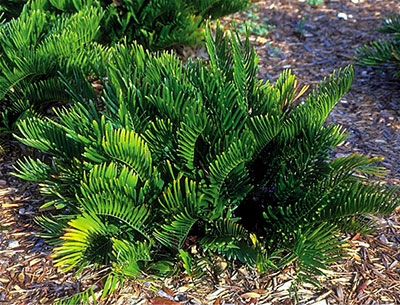Coontie
Like all cycads, the coontie has ancient origins. But this Florida plant is the only cycad native to the United States.

It’s also the preferred food source for larvae of the rare Atala butterfly. The coontie (Zamia integrifolia) looks like a small fern and is typically one to three feet tall. It has stiff, glossy, featherlike leaves attached to a thick, short, underground stem. Florida’s native peoples once ground up these underground stems to create a starchy “flour” for cooking. Don’t try this yourself, though—the stem is toxic unless prepared properly.
Because of its high drought tolerance and moderate salt tolerance, the coontie is an excellent choice for the coastal landscape. And it’s cold hardy, too. Coonties can be planted in sun or shade, and can be used as a specimen plant or in foundation and massed plantings throughout the state.
(Note: There is some disagreement to the correct botanical name; while many older University of Florida publications use Zamia floridana, other sources including The Atlas of Florida Vascular Plants use Zamia integrifolia.)
Also on Gardening Solutions

